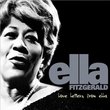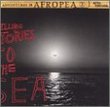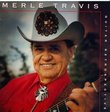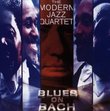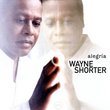| All Artists: Memphis Minnie Title: Queen of Blues Members Wishing: 1 Total Copies: 0 Label: Sony Original Release Date: 10/7/1997 Release Date: 10/7/1997 Genres: Country, Blues, Pop Styles: Classic Country, Chicago Blues, Vocal Blues, Traditional Blues, Regional Blues, Memphis Blues, Acoustic Blues Number of Discs: 1 SwapaCD Credits: 1 UPCs: 074646521229, 5099748784520 |
Search - Memphis Minnie :: Queen of Blues
 | Memphis Minnie Queen of Blues Genres: Country, Blues, Pop
|
Larger Image |
CD DetailsSimilarly Requested CDs
|
CD ReviewsMemphis Minnie Rocks! Ibochild | Los Angeles, CA USA | 12/22/2000 (5 out of 5 stars) ""Queen of the blues?," you may ask. After you check out this CD, you'll understand why. There were many outstanding female blues vocalists of the first half of the 20th Century, but Minnie not only sang, she was also an accomplished guitarist and wrote many of her songs. This is evidenced by "When the Levee Breaks," which starts off this eighteen track set. Minnie co-wrote and plays guitar on the song, but the lead vocals are by her husband, co-writer "Kansas" Joe McCoy. It's the same song that was later recorded by Led Zeppelin on their fourth album (the same one that included "Stairway to Heaven"). It also seems to be Kansas Joe singing on "Joliet Bound," which immediately follows the first track. Vocally, it's pretty much Minnie throughout the rest of the CD, although sometimes it's hard to tell because of her husky singing voice. This is an area where the liner notes could really have been helpful, but this is mere nit-picking. In addition to those songs mentioned, other stand out cuts are "New Orleans Stop Time," "Call the Fire Wagon," and the unabashedly sexual, "I'd Rather See Him Dead." Also of note are "He's in the Ring" and "Joe Louis Strut," which are both tributes to the former heavyweight champion.Memphis Minnie is the real thing. She's raw, bold and can play some mean guitar. Her playing ranges from "gut bucket" (a la Robert Johnson) to a more "rocking" style, later popularized by the likes of Chuck Berry (who is rumored to have recorded a jam session with her). Simply put, this CD should be a part of any comphrensive blues collection." Essential Blues, fun blues, teaching blues. Minnie's Blues Tony Thomas | SUNNY ISLES BEACH, FL USA | 08/23/2005 (5 out of 5 stars) "Minnie seems to be overlooked today. Yet, she was one of the most popular blues singers of the 1930s and 1940s. Her style and vigor and the excellence of both her singing, her guitar playing, and the lyrics of her songs, set her apart and above other blues singers.
Now, Minnie doesn't sing with the existential angst and bitter pain that blues singers adored by white post folk "blues fans" adore. That is because Minnie sings the real blues that real Black people in the Delta and in Tennessee, and then all over the country wanted. It is blues for Saturday night to juke and dance and party and drink and make love and lose love and maybe to listen to Sunday afternoon to remind you when the hangover leaves, or you realized who you ended up with last night. She plays and sings smiling blues, records that were supposed to make you happy enough to dance. Everytime I hear her, I am really struck by how her guitar playing really is a bridge between the old acoustic styles and the modern styles that would be identified with post-war electric blues. I am also struck with how much sexy fun records were back in her day, and what a hot momma Minnie must have been to see and to hear and to touch. " |

 Track Listings (18) - Disc #1
Track Listings (18) - Disc #1